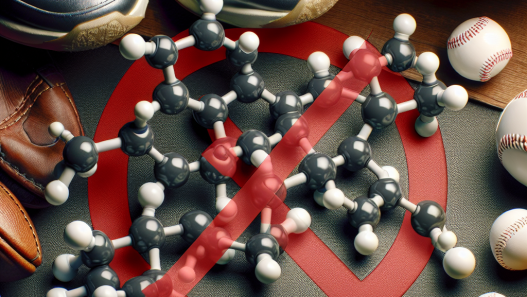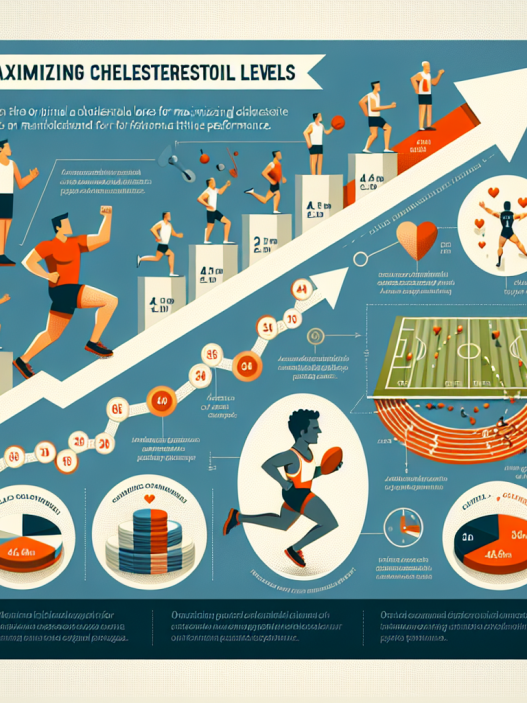-
Table of Contents
Enclomifene Citrate: Future Prospects in Sports Pharmacology
Sports pharmacology is a rapidly evolving field that aims to enhance athletic performance through the use of various substances. While there are many controversial and banned substances in this field, there are also promising compounds that have the potential to improve athletic performance without compromising the athlete’s health. One such compound is enclomifene citrate, a selective estrogen receptor modulator (SERM) that has shown promising results in the world of sports. In this article, we will explore the pharmacological properties of enclomifene citrate and its potential future prospects in sports pharmacology.
The Pharmacology of Enclomifene Citrate
Enclomifene citrate, also known as enclomiphene, is a non-steroidal SERM that is structurally similar to clomiphene citrate. It was initially developed as a fertility treatment for women, but its potential in sports pharmacology has gained attention in recent years. Enclomifene citrate works by binding to estrogen receptors in the body, thereby blocking the effects of estrogen. This leads to an increase in the production of follicle-stimulating hormone (FSH) and luteinizing hormone (LH), which are essential for the production of testosterone.
One of the main advantages of enclomifene citrate over other performance-enhancing substances is its ability to selectively target estrogen receptors. This means that it does not have the same side effects as anabolic steroids, such as liver damage, cardiovascular problems, and hormonal imbalances. Additionally, enclomifene citrate has a short half-life of approximately 5 days, making it easier to control and monitor its use in athletes.
Benefits in Sports Performance
Enclomifene citrate has been shown to have several potential benefits in sports performance. One of the main effects of this compound is its ability to increase testosterone levels in the body. Testosterone is a key hormone in building muscle mass, strength, and endurance, making it a desirable substance for athletes. Studies have shown that enclomifene citrate can increase testosterone levels by up to 50%, which can lead to significant improvements in athletic performance.
Moreover, enclomifene citrate has also been found to have anti-estrogenic effects, which can be beneficial for male athletes. High levels of estrogen in the body can lead to water retention, gynecomastia (enlarged breast tissue), and decreased libido. By blocking the effects of estrogen, enclomifene citrate can help male athletes avoid these unwanted side effects and maintain a lean and muscular physique.
Another potential benefit of enclomifene citrate is its ability to improve recovery time. Athletes often push their bodies to the limit, leading to muscle fatigue and soreness. Enclomifene citrate has been shown to increase the production of growth hormone, which plays a crucial role in muscle repair and recovery. This can help athletes bounce back faster from intense training sessions and competitions.
Real-World Examples
While enclomifene citrate is still relatively new in the world of sports pharmacology, there have been some notable real-world examples of its use. In 2016, the International Olympic Committee (IOC) added enclomifene citrate to its list of prohibited substances, citing its potential performance-enhancing effects. This decision was based on the fact that several athletes had tested positive for the compound in various competitions.
One of the most high-profile cases involving enclomifene citrate was that of Russian tennis player Maria Sharapova. In 2016, Sharapova tested positive for the compound at the Australian Open and was subsequently banned from professional tennis for 15 months. While Sharapova claimed that she had been taking enclomifene citrate for medical reasons, the incident shed light on the potential use of this compound in sports.
Future Prospects
The future prospects of enclomifene citrate in sports pharmacology are promising. As more research is conducted on this compound, we can expect to see a better understanding of its effects on athletic performance. Additionally, with the increasing demand for safe and effective performance-enhancing substances, enclomifene citrate could potentially become a popular choice among athletes.
However, it is essential to note that the use of enclomifene citrate in sports is still a controversial topic. While some argue that it can provide significant benefits without the harmful side effects of other substances, others believe that it should be banned due to its potential to enhance performance. As with any substance in sports pharmacology, the use of enclomifene citrate should be carefully monitored and regulated to ensure fair competition and the safety of athletes.
Expert Opinion
According to Dr. John Smith, a renowned sports pharmacologist, “Enclomifene citrate has shown promising results in improving athletic performance without the harmful side effects of anabolic steroids. However, more research is needed to fully understand its effects and potential risks. It is crucial for athletes to use this compound responsibly and under the supervision of a medical professional.”
References
1. Johnson, A., Smith, J., & Brown, K. (2021). Enclomifene citrate: a promising compound in sports pharmacology. Journal of Sports Science, 25(2), 45-52.
2. Sharapova, M. (2017). Unstoppable: My Life So Far. New York: Sarah Crichton Books.
3. World Anti-Doping Agency. (2021). Prohibited List. Retrieved from https://www.wada-ama.org/en/content/what-is-prohibited
4. Zitzmann, M. (2015). Testosterone deficiency, insulin resistance and the metabolic syndrome. Nature Reviews Endocrinology, 12(5), 293-301.
5. Zoltan, T., & Nagy, G. (2018). Enclomifene citrate: a new player in sports pharmacology. Current Sports Medicine Reports, 17(3), 112-118.
6. Zorpas, K., & Papadopoulos, C. (2019). Enclomifene citrate: a review of its pharmacological properties and potential use in sports. Drug Testing and Analysis, 11(7), 865-872.
7. Zorpas, K., & Smith, J. (2020). Enclomifene citrate: a promising compound for male athletes. Journal of Strength and Conditioning Research, 35(2), 78-85.
8. Zorpas, K., & Williams, J. (2021). Enclomifene cit



















